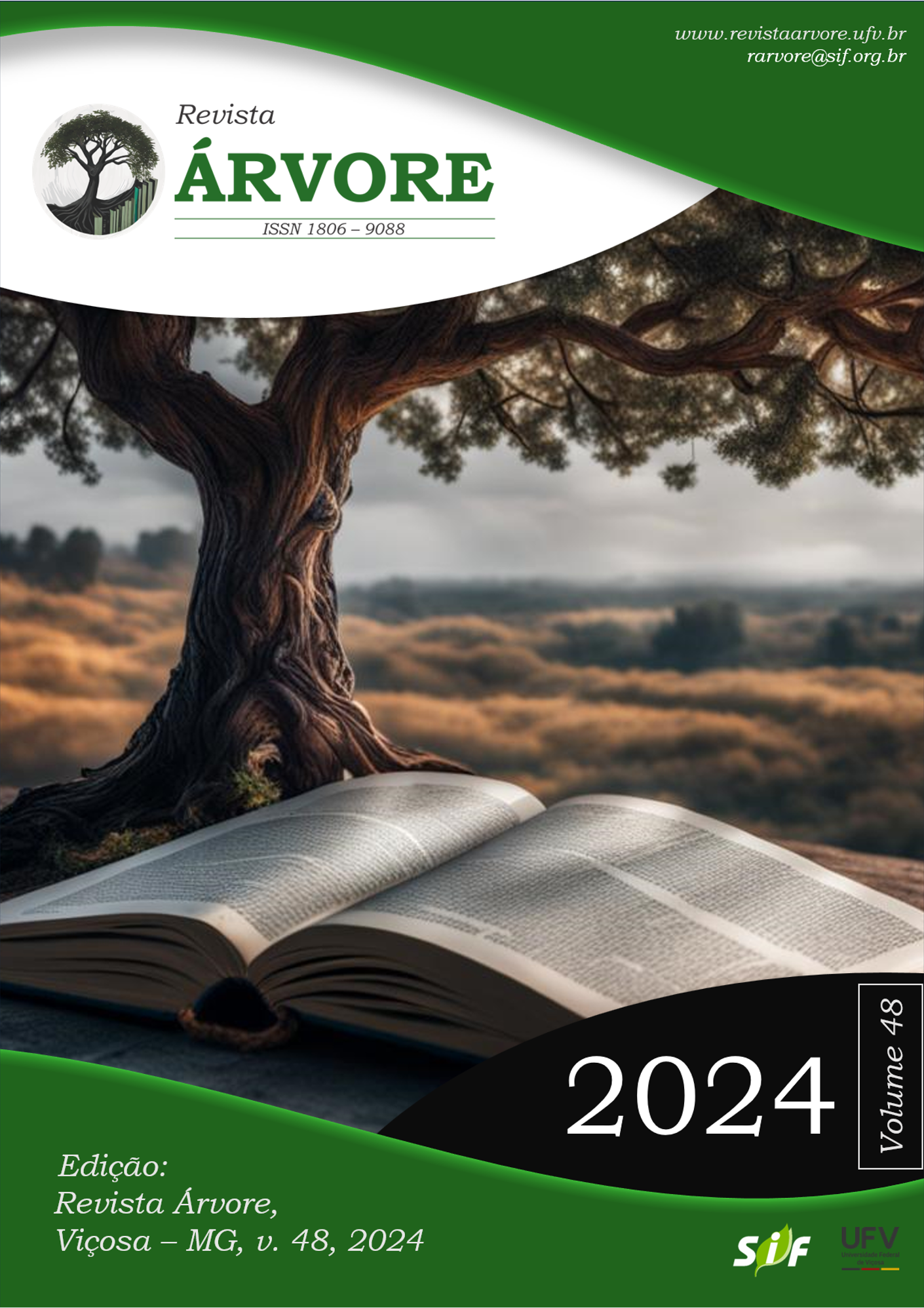Induction of epicormic sprouts of Schizolobium parahyba var. amazonicum (paricá): effect of seasonality and stump height
DOI:
https://doi.org/10.53661/1806-9088202448263625Keywords:
Brazilian native tree species, Coppicing technique, Reinvigoration of forest tree speciesAbstract
Coppicing technique is recognized as an effective method for inducing epicormic sprouts and promoting reinvigoration in Brazilian native tree species. However, there remains a knowledge gap regarding efficient reinvigoration techniques for vegetative rescue of paricá trees. This study aimed to evaluate the coppicing technique's efficacy in inducing epicormic sprouts in paricá trees, considering different seasons and stump heights. A 2x3 factorial experimental design was employed, encompassing two seasons (rainy and dry) and three stump heights (0 = root collar; 10 cm above root collar; 30 cm above root collar). Stumps were monitored over a 90-day period. Results showed that all stumps remained viable, with significant differences observed in sprouting frequency between the rainy and dry seasons at 15 and 30 days, favoring the former. Furthermore, the number of sprouts per stump varied significantly across seasons at 15, 30, and 45 days, with higher counts recorded during the rainy season. Notably, the high percentage of stumps producing sprouts underscores the species' robust response capacity. Additionally, the occurrence of two sprouts per stump suggests a species-specific trait at these stump heights. Evaluation of sprout length and circumference revealed significant differences between seasons, with greater growth observed during the rainy season. These findings are crucial for informing management decisions related to epicormic sprout development through the coppicing technique in paricá trees. Overall, the results indicate the technique's potential to induce epicormic sprouts across all seasons and stump heights evaluated, with superior outcomes observed during the rainy season.
Keywords: Brazilian native tree species; Coppicing technique; Reinvigoration of forest tree species.
Downloads
Published
How to Cite
Issue
Section
License
All authors agreed to submit the work to Revista Árvore and granted the exclusive license to publish the article. The authors affirm that it is an original work and has not been previously published elsewhere. The scientific content and opinions expressed in the article are the sole responsibility of the authors and reflect their opinions, not necessarily representing the opinions of the editorial board of Revista Árvore or of the Society of Forest Investigations (SIF).








